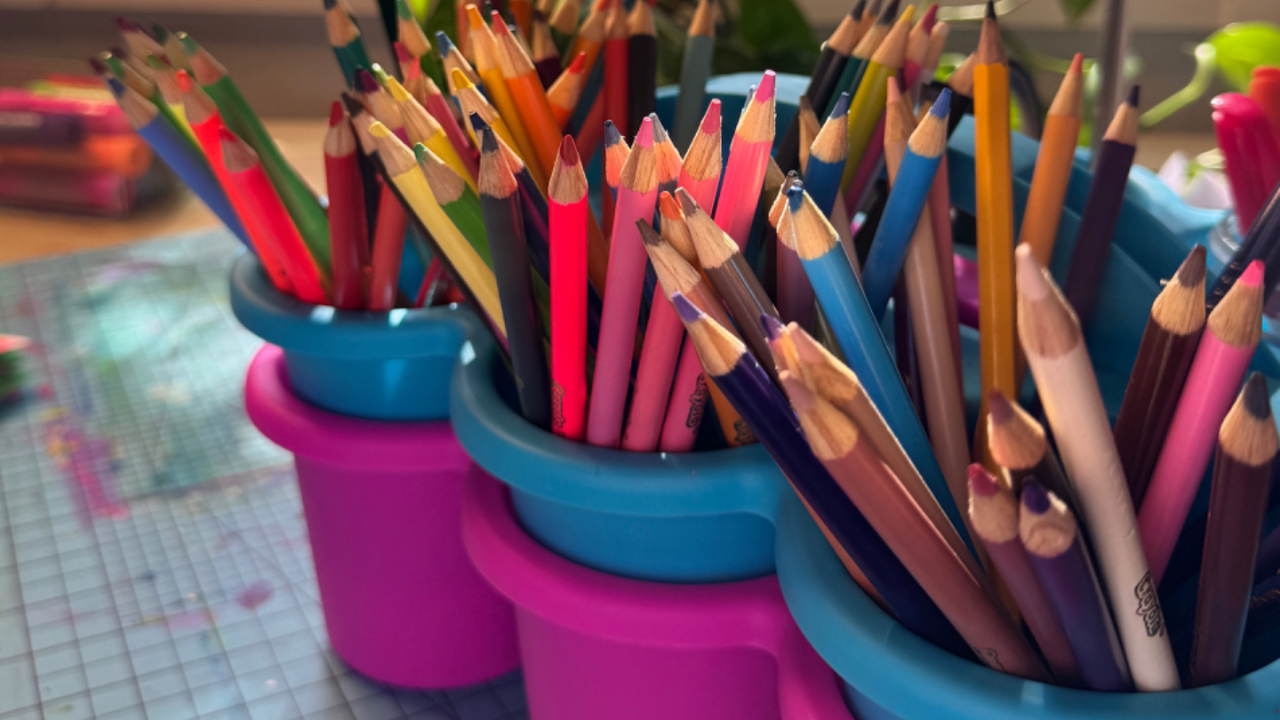What Is Art Therapy Really? (And Why It's Not Just "Arts and Crafts")

Hey friend,
If you’ve found your way here, maybe it’s because you’ve heard the term art therapy tossed around — and you’re curious.
Maybe you’re wondering... Is it just painting pretty pictures? Is it adult coloring books? Is it Pinterest crafts?
Or maybe you’re like a lot of people who say, "I'm not artistic... so could art therapy even help me?"
I want to sit with you for a minute — and open a real conversation about what art therapy truly is.
Because the truth is, it’s so much deeper, so much more powerful, and so much more human than most people realize.
🎨 Art Therapy Is About More Than Just Art
At its core, art therapy isn’t about making "good" art.
It’s about making meaning.
The Canadian Art Therapy Association (CATA) defines art therapy as "the combination of the creative process and psychotherapy, facilitating self-exploration and understanding."
It’s a space where images, symbols, color, and texture become a bridge — helping you access and express parts of yourself that words might not reach.
And it’s not random.
A trained art therapist brings together psychological theory, creative methods, neuroscience, and relational depth to hold that space safely.
In fact, as Cathy Malchiodi (2006) writes, "art therapy is grounded in the belief that the creative process involved in artistic self-expression helps people resolve conflicts, develop interpersonal skills, manage behavior, reduce stress, and increase self-esteem and self-awareness."
This work is backed by research — and has been shown to support people navigating anxiety, depression, trauma, grief, life transitions, and even physical health conditions (Kaimal et al., 2016).
🧠 Why the Process Matters (Not the Product)
In psychodynamic theory (the roots of modern therapy), there's a concept called sublimation — the healthy channeling of intense emotions into creative expression.
Art therapy offers a safe container for this.
You don't have to talk about your hardest memories right away.
You don't have to know exactly what you feel.
Sometimes, your brushstrokes, your clay sculpture, your scribbles will speak for you — and to you.
This isn't just emotional.
It’s neurological too.
Studies show that engaging in art-making can regulate the amygdala (the brain's alarm system), increase dopamine (our natural "feel good" chemical), and stimulate the prefrontal cortex, which helps us process emotions more clearly (Bolwerk et al., 2014).
🌱 The Heart of Art Therapy: Relationship and Witnessing
It’s easy to think of art therapy as just "you and the art."
But what makes art therapy different from simply making art at home is the relationship.
In every session, you’re not alone.
You have a trained, compassionate therapist witnessing your process — holding your emotions, guiding your exploration, and helping you make meaning from your experiences.
The American Art Therapy Association (AATA) emphasizes that "art therapy integrates the fields of human development, visual arts, and the creative process with models of counseling and psychotherapy."
That means art therapy isn’t only about creating; it’s about connecting — with yourself, with your emotions, and with someone trained to help you navigate it safely.
As Irvin Yalom (2002) reminds us in his work on therapeutic factors, the power of being seen and understood in therapy can be profoundly healing on its own.
💛 Why It Matters to Protect the Integrity of Art Therapy
Today, you’ll see "art therapy" used everywhere — paint nights, adult coloring books, wellness retreats.
While creative activities are beautiful and healing in their own right (and I celebrate them!) — they are not the same as clinical art therapy.
To practice as an art therapist, one typically needs:
-
A master's-level education (or master's-equivalent diploma in Canada)
-
Hundreds of hours of supervised clinical work
-
Deep study in psychology, ethics, art materials, trauma, neuroscience, and human development.
Real art therapy is ethical, intentional, trauma-informed, and held in a therapeutic relationship.
You deserve that kind of care.
🌷 In Closing
Art therapy is not about making pretty things.
It’s about finding your way back to yourself — through color, form, movement, and metaphor.
It’s about making the invisible visible.
And it’s about knowing you don’t have to do it alone.
If you’re curious to experience it, I’d be honored to walk that creative path with you.
Whether it's messy, vibrant, soft, jagged, joyful, or tearful — your art will have a place here. And so will you.
With warmth,
Ashleigh
Stay connected with news and updates!
Join our mailing list to receive the latest news and updates from our team.
Don't worry, your information will not be shared.
We hate SPAM. We will never sell your information, for any reason.








